Weeting Steam Engine Rally & Country Show
Posted by Chris Graham on 18th April 2024
Simon Colbeck casts his mind back to last year’s fabulous Weeting Steam Engine Rally & Country Show where there was so much to see and enjoy.
All photographs: Simon Colbeck
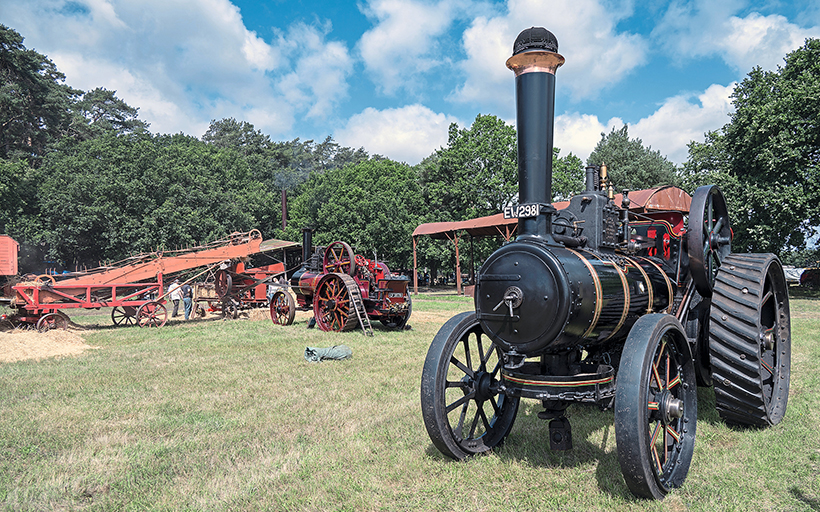
Weeting Steam Engine Rally: Fowell No. 108 of 1922 Percy awaits its next call to action as Burrell No. 1522 of 1891 is waiting for the elevator to start up again to feed the bailer it’s powering.
The origins of the Weeting Steam Engine Rally & Country Show date back to 1968, when the first rally was staged by Richard Parrott. Today it’s grown into one of the UK’s largest, with many permanent exhibits kept on the rally site.
One such permanent exhibit is the very impressive Marshall semi-portable engine No. 216622 of 1893. This large, under-type engine with a locomotive-type boiler was mesmerising to watch as it slowly ticked-over in the boiler house area, near the wood-sawing section.
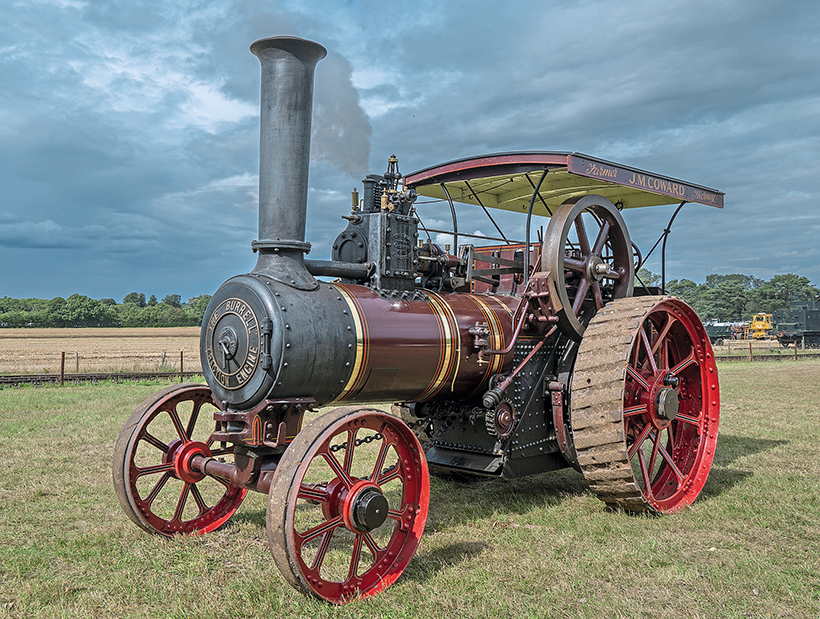
After a day on the saw bench, Burrell 8nhp No. 2424 of 1901 catches a moment of sunlight. This interesting machine has an unusual, small-diameter flywheel which gives it a most distinctive appearance.
Another permanent exhibit is the standard gauge Fengate Agricultural Railway. Working the railway during the rally was the resident Andrew Barclay saddle tank locomotive No. 2069 of 1939 Little Barford. This engine was originally supplied for use at Little Barford power station where it worked until 1964. It spent the last years of its working life operating at Acton Lane power station. When withdrawn by the CEGB in 1983, it and a sister locomotive were the last regular working steam locomotives in London. The little Barclay certainly made its presence known when it roared up the incline pushing the 10-ton Grafton Steam crane up the line. This former LNER crane was withdrawn by BR in 1981 and is currently undergoing boiler work. It will certainly make an interesting sight once the restoration is finished, supplying wood to the timber yard.
This year with nearly 100 full-size engines in attendance on rally chairman Richard Parrott’s fields, the arena was double-stacked for the daily parade of engines. Being situated on the border between Norfolk and Suffolk, and only a stone’s throw from the spiritual home of Charles Burrell & Sons at Thetford, Weeting has always been a paradise for fans of all things Burrell.
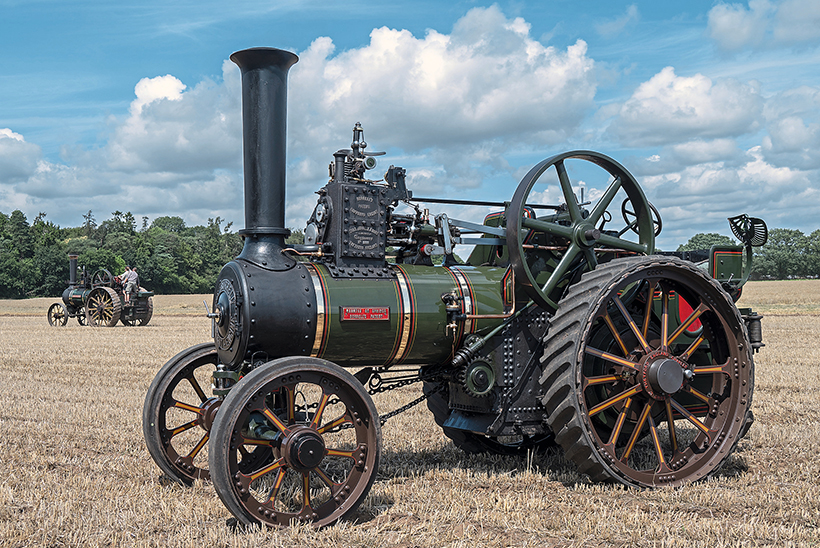
Burrell SCC traction engine No. 2426 of 1901 in the ‘playpen’ at Weeting.
Notable first-time visitors to Weeting were two engines from the Horsham Traction Company. Appropriate visitors to Burrell country, road locomotive His Majesty and showman’s engine Princess Marina looked very at home among the numerous Thetford products that regularly attend Weeting. Both engines made a tremendous sound tackling the iron-wheeled timber trailer in the ‘playpen’ on the very wet Friday. The sodden, sandy soil certainly provided challenging conditions for a pair of engines and their crews which are no strangers to working hard. Despite Princess Marina’s escapades in the Weeting mud, after a good clean on Saturday, the engine was ready to put down the amps for the skid on Saturday night.
Another first-time visitor to Weeting was Burrell single-crank compound traction engine No. 2426 of 1901. The engine spent 48 years threshing in Oxfordshire. Now owned by Karl Kitchener and Tom Wing, it’s been restored to its original condition.

Working hard in the timber yard at Weeting was Burrell No. 4051 of 1926, Bett
In addition to the engines owned by Mr Parrott, another large collection of engines gathered together had come from the Saunders collection of Stotfold. Fowlers Nos. 14425 of 1916 Carry on and 19782 of 1932 The Lion with Burrell No. 3890 of 1922 Majestic provided light and atmosphere for the entertainment on the stage during the evenings.
The timber yard area is a real feature of Weeting. With the engines, saw benches and timber trailers all situated in a delightful wooded area which provided both useful shade and shelter from the rain during the variable weather of the weekend. Burrell 8nhp traction engine No. 2424 of 1901 was one of the engines employed on the bench. This interesting machine has an unusual, small-diameter flywheel which gives it a most distinctive appearance. Also working hard in the timber yard was Burrell No. 4051 of 1926 Betty. It was powering a Tasker saw bench and barking nicely as the saw blade bit into the wood.
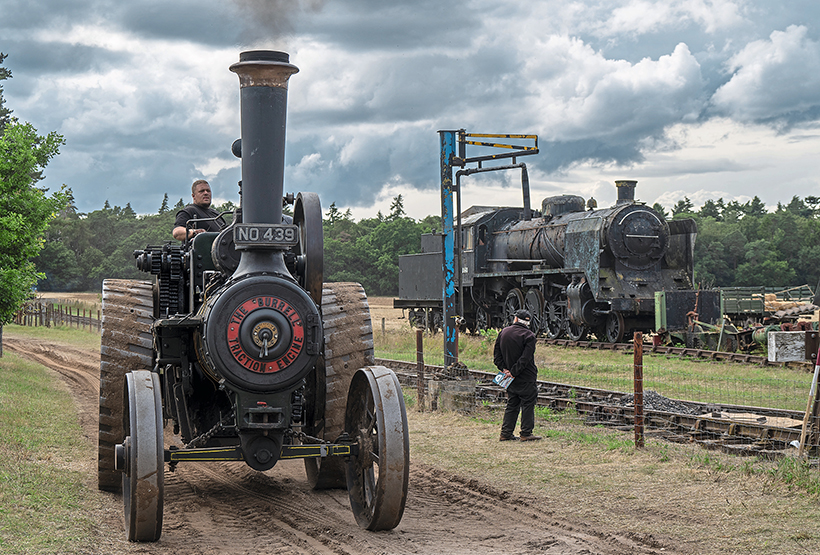
Only at Weeting could you see Burrell No. 3106 of 1909 Princess Royal next to a 5ft gauge Finnish steam locomotive! The giant locomotive is one of two engines from Finland owned by David Buck, the first of which has just been restored to working order in LNER apple green, no less!
A number of engines were working the timber trailers around the wood yard and in the playpen. One such was the stunning Burrell 7NHP double-crank compound No. 3923 of 1922 Jessie. This engine was used for contract threshing up until 1948 and looked superb with a timber trailer in tow.
The stone-crushing and road-making section kept plenty of engines busy and was nice and noisy next to one of the beer tents! Centre stage was Marshall 6nhp single-cylinder portable No. 45028 built in 1906. Representative of the many thousands of such engines exported all around the world, this example was repatriated from Chile in South America. Exhibited in fine, original paintwork, the engine looked a treat under the storm-laden skies on the Sunday.
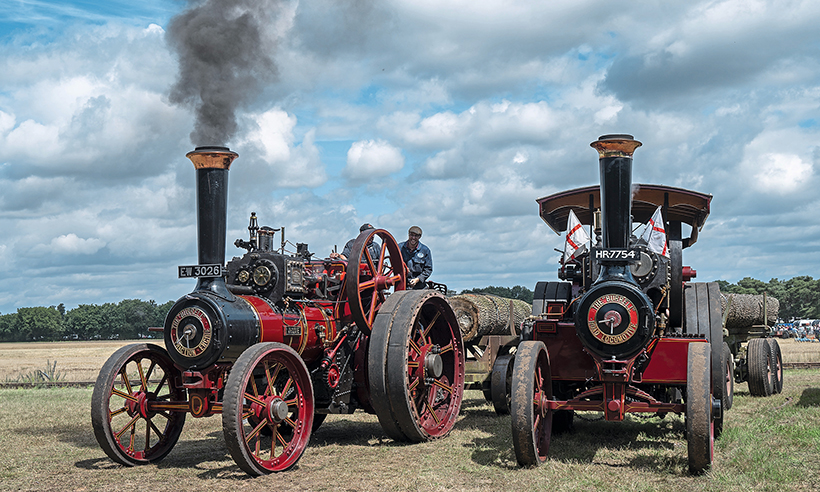
On timber-hauling duties, Burrell 7nhp DCC No. 3923 of 1922 Jessie and Burrell No. 3633 of 1914 Lord Kitchener look very fine together
At the top of the rally site, resident Fowler BB1s Nos. 15453 and 15454 of 1925 were sharing ploughing duties with Fowler K7 No. 13831 of 1913. This was the K7’s first visit to Weeting and it performed well on the long drag with the Fowler three-furrow counterbalance plough.
One of the unique features of the Weeting rally is the harvest field area. With a crop left in the field and ready to harvest, a host of vintage machines were employed to do the work. Rain stopped play on Friday, but on Saturday and Sunday the vintage combines, tractor-hauled combines and loaders were all busy, providing a splendid illustration of post-war farming practise.
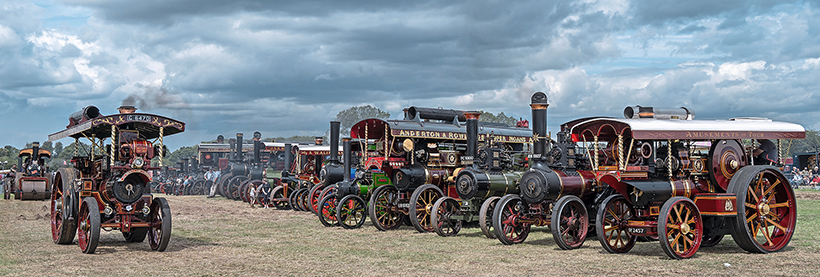
Burrell showman’s No. 3669 of 1915 Nero takes its turn in the parade of engines in the arena past an already impressive line-up of engines.
Out in the field on Sunday was a 1972 International 8-51 combine. Only recently returned to operating condition, this was the first time it had been out in a field for four years. A number of tractor-pulled combines were also to be seen working the field. One such example was a Silver Queen combine being pulled by a 1951 Turner 2B Yeoman of England tractor. These Wolverhampton-built tractors finished production in 1957 and were, in many ways, ahead of their time when production started in 1949. At the lower end of the field a Fordson Major tractor with cab and a Perry bale loader was on hand to collect the freshly cut bales and put them on one of the numerous trailers with vintage tractors working the field.
With so much of the rally site given over to working demonstrations Weeting really has something for everybody. There is so much to see and do in addition to the steam exhibits with a fine selection of commercials, vintage cars and miniatures all adding to the attractions at this, the East of England’s premier steam event.
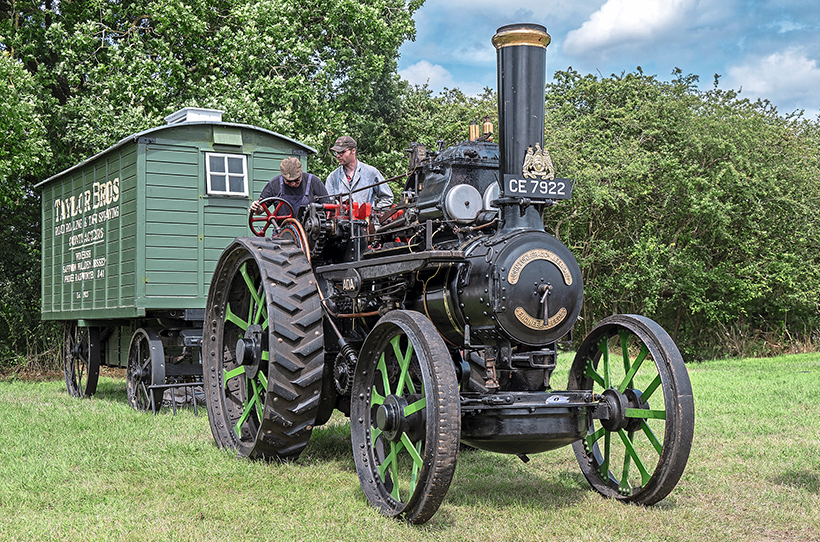
Fowler traction engine No. 10373 of 1905 Ada has been a regular at Weeting for many years.
The organising team are to be congratulated on putting together such a great show and I’m sure we can expect more of the same this year!
This feature comes from the latest issue of Old Glory, and you can get a money-saving subscription to this magazine simply by clicking HERE

Previous Post
The giant tractors from Ford’s FW Series
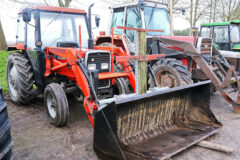
Next Post
Bargains at the Somerset Vintage Tractor Show’s sale



